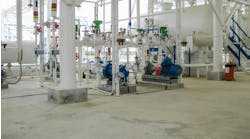The first time I set foot in a large oil refinery, as a member of group of young chemical engineering students, my jaw almost hit the ground. It wasn’t just the size; it was the shear complexity. Pipes seemed to go everywhere, huge towers and stacks loomed above my head, and steam leaks hissed and sputtered around us.
“How can anyone ever master all of this?” I mumbled, in awe and dread.
Our guide, who happened to be nearby, smiled benevolently. “No one can. Of course, everyone gets to know parts of it well; but no one knows the whole thing.”
His observation was profound. My formal education had always been about mastering concepts and methods, in order to pass tests. In my naivety, I assumed that the rest of life must be the same. The refinery manager must be the person who had passed all the tests and understood it all. I was wrong. My guide was right: No one can know it all.
High levels of complexity create many opportunities for error, though the errors themselves often are incredibly simple, as the following two examples illustrate.
Cooling water circuits are an important part of most process plants. They provide a mechanism for temperature control and for removing surplus heat. A cooling system that can’t satisfy the needs of the process can lead to operational difficulties of many different kinds.
After a large chemical plant’s major revamp, the site began experiencing a shortage of cooling water. This created bottlenecks that limited production and increased energy intensity; so, management initiated a project to add a cooling tower and upgrade the cooling water pumps.
A colleague of mine on the project team suspected something important had been missed. Before designing new equipment, he carried out a hydraulic survey of the existing cooling water system. His study yielded a surprising result. A section of the plant had been decommissioned during the revamp but the equipment was left in place. All streams into and out of this area should have been isolated. However, the main valve for the cooling water had been overlooked and left open. After my colleague reported this, the valve was closed, eliminating large, unmetered cooling water flow. This resolved the cooling water shortage without any new equipment or upgrades.
Heat recovery systems also are very important in many process plants. Some of the most complex are the crude unit preheat trains found in oil refineries. Heat exchanger cleaning programs are critical for maintaining the performance of these systems; refinery management has become very sophisticated in this area. Cleaning techniques are improving, and software tools are available for assessing appropriate cleaning intervals for the heat exchangers in the circuit. However, things can and do go wrong.
During a crude preheat train study in a refinery [1], I noted that one of the heat exchangers was out of service — not unusual, as heat exchangers often require maintenance. However, the records showed this particular heat exchanger had been idle for more than three months. Further investigation revealed the heat exchanger had been cleaned. When the work was completed, the maintenance supervisor had notified the shift supervisor. This happened right at the end of the day shift, too late for the shift team to put the heat exchanger back in service. Somehow, the night shift wasn’t informed of the situation, so, the heat exchanger remained out of service until I started asking questions three months later. When the unit manager was informed of the situation, it required only a few hours to put the heat exchanger back in service. The energy loss during the time the heat exchanger had been left idle after the cleaning was worth over $100,000.
Both of these examples highlight a breakdown in communication that thwarted completion of a task. I would be very interested to hear from readers who have seen similar simple problems in the midst of complex facilities.
REFERENCE
1. Rossiter, A. P., ‘Back to the Basics’, Hydrocarbon Engineering, Vol. 12, No. 9, pp. 69-73, September 2007



